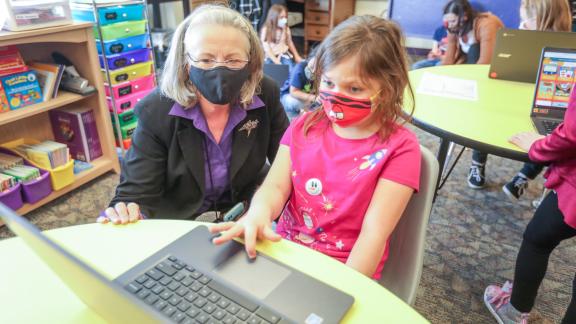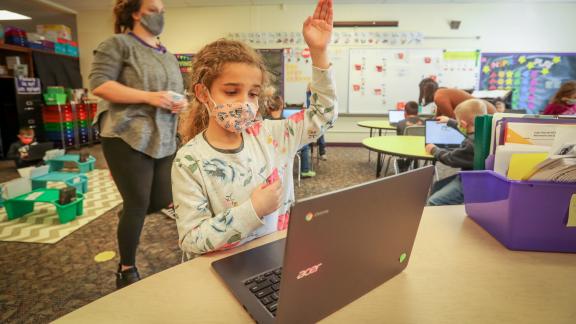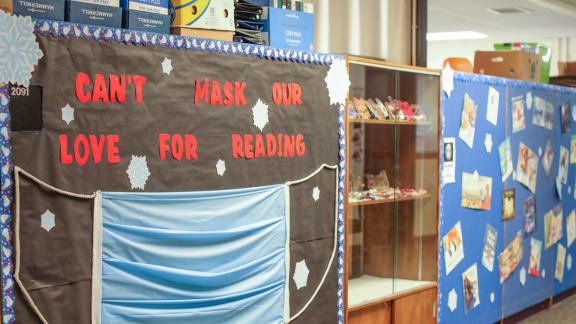Remote learning. Hybrid schedules. Limited extracurricular activities. These things are taking a social, emotional, and academic toll on students as the coronavirus pandemic has upended everyone’s life.
What are local school administrators seeing? What can be done to help Adirondack students who are struggling?
Adirondack Foundation in February put these questions to a panel of educators, counselors, and students during an online discussion about the rise of disengaged youth in the COVID-era. Nearly 70 people joined, including Cedar Young and Sam Ash, high school students from Saranac Lake, who shared their insights and experiences.
More and more students, as well as parents, have been “'ghosting;” they are not staying in touch with teachers or school officials, Cynthia Ford Johnston, interim superintendent at Ticonderoga Central School, said. Teachers in Ticonderoga, like many others, have had success re-engaging students after going door-to-door to check in on them – a time- and resource-intensive effort that Cynthia said was worth it.
Cynthia also reported that more students are experiencing feelings of desperation and sadness because of prolonged isolation and declining health and fitness. AuSable Valley Central School guidance counselor Matt Rogers, Saranac Lake High School Principal Josh Dann, Liz Cole, an in-school counselor with Behavioral Health Services North, and others nodded in agreement. At the same time, this group observed that some students are thriving academically, theorizing that remote learning can alleviate the social pressures of interpersonal interactions for which some teens and kids may feel ill-suited.
Cedar, a soon-to-graduate senior, noted that when forced to learn over Zoom, students will often keep their cameras off, which makes an already challenging learning environment even more difficult. Students and teachers cannot connect with each other the way they can in person, and students who choose to keep their cameras on must go against the grain of peer pressure.
In a similar vein, Sam, a sophomore and three-sport athlete, noted that “staying in touch” is not the same as proactively “reaching out.” Even with the fluidity and uncertainty of their circumstances, students and teachers must take responsibility to do more of the latter to facilitate genuine connections.
Looking ahead, the social-emotional impacts of this crisis are likely to linger for a very long time. Matt Rogers said his school is planning a summer program that will focus as much on fun and socialization as on academics. Liz Cole said re-entry to school in the fall may cause anxiety in some students and they will need to be supported. She also noted that this experience has been every bit as exhausting and stressful for teachers, and we can all help by making our community members aware of the mental health and wellness resources available to them. Josh Dann said his school will continue its mentoring program, pairing older students with younger ones to strengthen its support system and bolster resiliency.
Sam looks forward to getting back to school for regular classes and the socialization he and his friends are missing out on. “In-person is what really counts for students, for sure,” he added.
It is clear that educators are a dedicated lot – and so are students. And, as we learned during the discussion and through gifts and grants over the past year, our community members care deeply about education and want to help. During these challenging times, grants from Adirondack Foundation have helped ensure that students continue to receive meals, families can receive additional assistance whether schools are open or not, students have internet access or are provided Chromebooks. Local philanthropy does more than provide funds, it signals to educators and students that the community is here for them.
These schools in the past year received COVID-response grants from Adirondack Foundation: AuSable Valley, Bouquet Valley, Brushton-Moira, Chateaugay, Clifton Fine, Clinton-Essex-Warren-Washington BOCES, Crown Point, Indian Lake, Keene, Lake Placid, Lakeside, Long Lake, Malone, Minerva, St. Bernards, St. Regis Falls, Salmon River, Saranac Lake, Schroon, Ticonderoga, Tupper Lake, Willsboro. Dozens more schools received grants for other purposes ranging from broadcasting club to foreign language teaching and many others.




